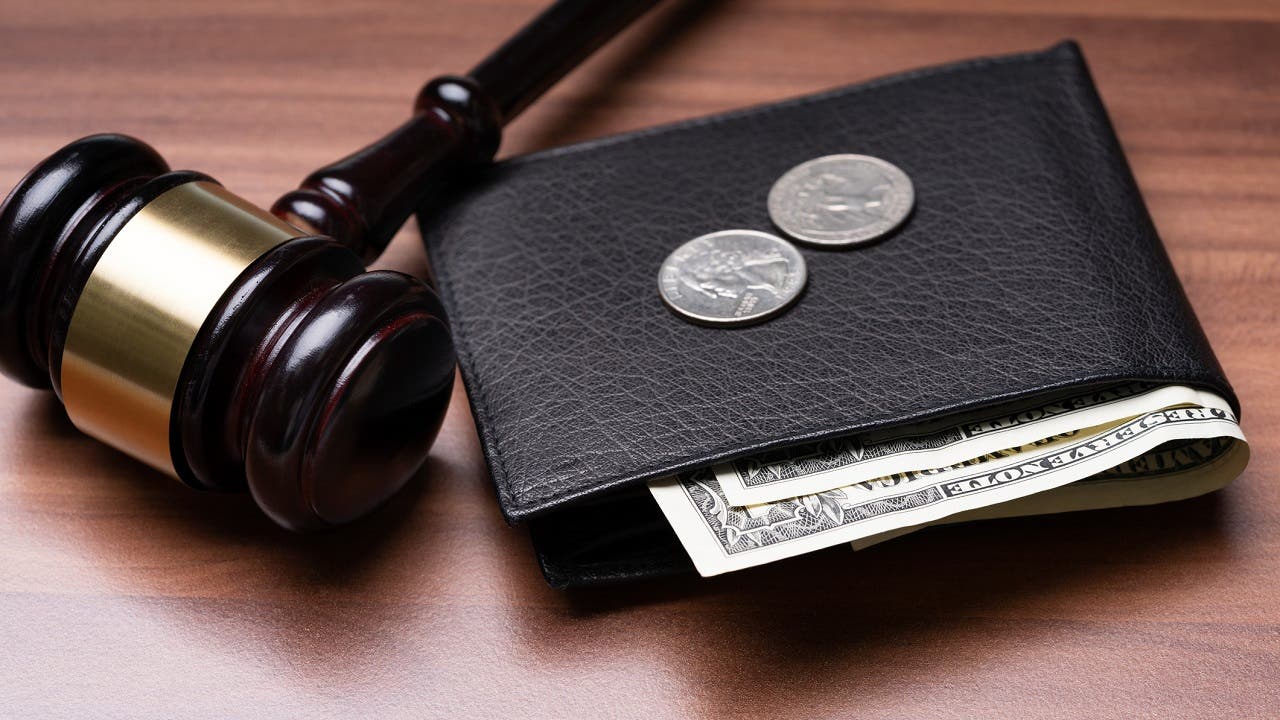Can bankruptcy stop wage garnishment?

The Bankrate promise
At Bankrate we strive to help you make smarter financial decisions. While we adhere to strict , this post may contain references to products from our partners. Here's an explanation for .
Key takeaways
- Wage garnishment occurs when a creditor gets an official order to withhold a portion of your disposable earnings to repay delinquent debts.
- The average wage garnished for private workers is 10 percent, however, in some cases it can exceed the 25-percent mark.
- Though not guaranteed, Bankruptcy could protect you from garnishment. However, the consequences will be long lasting on your credit and finances, which is why it should be considered a last resort.
- Other ways to stop garnishment without filing for bankruptcy, include settling your debt with creditors and fighting back in court.
Wage garnishment is a difficulty that many American workers have to face. According to a Kellogg study, about one percent of private-sector workers have at least one wage garnishment. The average garnishment is about 10 percent of their gross income — an amount equal to what most people spend on groceries for the month.
If you’re struggling to make ends meet due to wage garnishment, filing for bankruptcy may protect you from your creditors and provide some financial relief. However, it’s important to understand the rules, including scenarios where bankruptcy won’t provide the results you’re seeking.
Does bankruptcy stop wage garnishment?
With wage garnishment, your employer must withhold a portion of your wages and pay them toward a debt you owe. According to ADP, employers can typically garnish 25 percent of your disposable income. However, in some cases, the garnishment may exceed that amount.
Bankruptcy has the potential to put a stop to wage garnishment in some situations. With many bankruptcy cases, an automatic stay will go into effect after filing the bankruptcy petition. The automatic stay is a court order that stops most creditors from continued debt collection activities—wage garnishment included.
What types of garnishments are not stopped by bankruptcy?
Bankruptcy isn’t a silver bullet where wage garnishment is concerned. Bankruptcy may not be able to stop wage garnishment under the following circumstances (and potentially others as well):
- Family support payments (i.e., child support and alimony) are not subject to an automatic stay.
- Non-dischargeable debts (such as recent tax liabilities).
- Multiple recent bankruptcies
If you file a Chapter 13 bankruptcy (aka a wage earner’s plan), keep up with your monthly payments. Failing to pay the bankruptcy trustee as promised could result in a dismissal of the bankruptcy and a reinstatement of wage garnishment in the future.
How to stop wage garnishment with bankruptcy
You can hire a bankruptcy attorney to represent you in legal proceedings that pertain to your debts, and there are certainly benefits to doing so. Yet some people opt to file a bankruptcy petition on their own. This process is known as filing bankruptcy “pro se”—a Latin phrase that means “for yourself.”
If you decide to move forward with the do-it-yourself bankruptcy approach to try to stop garnishments, below are some of the steps you may need to complete:
- Gather documents. You may need financial documents on hand when you file for bankruptcy, including tax returns (past two years), recent bank statements, pay stubs, proof of income and retirement account statements.
- Complete credit counseling. Whether you file for Chapter 13 or Chapter 7 bankruptcy, you will need to complete a credit counseling course. Make sure the credit counseling agency that provides the course is approved by the Department of Justice.
- Fill out paperwork. Filing a bankruptcy petition requires you to complete a lot of paperwork. Anyone can access bankruptcy forms online, but you may need legal advice from a licensed attorney to navigate the process properly.
- Get a case number. Once you file a bankruptcy petition with the clerk of court and pay any necessary filing fee, you should receive an official court stamp and a case number.
- Request a copy of your earnings withholding order. Ask your employer for a copy of the earnings withholding order (EWO) that it received when your garnishment went into place.
- Contact the creditor. Using the name and contact information on your EWO, contact the creditor and any attorney used to file a wage garnishment against you. You can send a copy of your bankruptcy filing, along with the EWO, and request for the garnishment to stop.
- Notify the sheriff. When your original EWO was put into place, the sheriff should have received a notice from the creditor. Therefore, the sheriff will need to receive another separate notice when it’s time for the garnishment to end. Once the sheriff contacts your employer again, the withholdings from your paycheck should stop.
- Talk to your payroll department. Your employer won’t stop withholding funds for the garnishment until the sheriff provides notice for it to do so. However, you may want to give the payroll department a heads up to be watching for communication.
Note that the steps above provide a high-level overview of the process of filing for bankruptcy and trying to stop wage garnishment. However, bankruptcy laws and procedures can vary by state. For legal advice about your specific situation, it’s best to speak with a licensed attorney.
How to stop wage garnishment without bankruptcy
Filing bankruptcy can provide you with protection from your creditors when you can’t afford to repay certain debts. And in some cases, bankruptcy results in an end to wage garnishment. But bankruptcy can come with some serious consequences, such as damage to your credit for many years to come, as well as hindering your ability to access affordable credit in the future.
If you’re looking for other possible ways to stop wage garnishments without filing for bankruptcy, here are some options to consider:
- See if you’re eligible for an exemption. Some people may be able to qualify for an exemption that reduces the amount of their wage garnishment. Hardship exemptions and head-of-household exemptions are two examples you may want to research if a garnishment is putting an excessive strain on your household budget.
- Settle the debt. You might be able to negotiate a lump-sum settlement with your creditor to pay off the debt for less than you owe. If you can agree upon a number that works for both parties, it might be worthwhile to use a bonus, tax refund, or even home equity to resolve the debt and stop future wage garnishment activity.
- Fight back in court. In some scenarios, you might be able to convince the court to overturn (aka vacate) a judgment and wage garnishment order. However, you or your attorney will typically need to prove that something went wrong with the initial case to succeed with this approach.
Bottom line
The best way to fight against wage garnishment is to avoid it in the first place. If you can pay or settle a debt before a creditor takes you to court, it’s usually in your best interest to do so.
Talking to a reputable attorney about your situation may also be beneficial. An attorney can advise you about your rights and help you understand potential ways to defend yourself if you can’t afford to repay a debt as promised.
Related Articles



